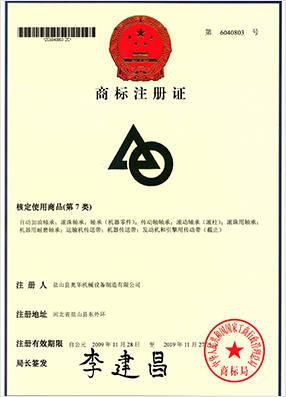 Afrikaans
Afrikaans  Albanian
Albanian  Amharic
Amharic  Arabic
Arabic  Armenian
Armenian  Azerbaijani
Azerbaijani  Basque
Basque  Belarusian
Belarusian  Bengali
Bengali  Bosnian
Bosnian  Bulgarian
Bulgarian  Catalan
Catalan  Cebuano
Cebuano  Corsican
Corsican  Croatian
Croatian  Czech
Czech  Danish
Danish  Dutch
Dutch  English
English  Esperanto
Esperanto  Estonian
Estonian  Finnish
Finnish  French
French  Frisian
Frisian  Galician
Galician  Georgian
Georgian  German
German  Greek
Greek  Gujarati
Gujarati  Haitian Creole
Haitian Creole  hausa
hausa  hawaiian
hawaiian  Hebrew
Hebrew  Hindi
Hindi  Miao
Miao  Hungarian
Hungarian  Icelandic
Icelandic  igbo
igbo  Indonesian
Indonesian  irish
irish  Italian
Italian  Japanese
Japanese  Javanese
Javanese  Kannada
Kannada  kazakh
kazakh  Khmer
Khmer  Rwandese
Rwandese  Korean
Korean  Kurdish
Kurdish  Kyrgyz
Kyrgyz  Lao
Lao  Latin
Latin  Latvian
Latvian  Lithuanian
Lithuanian  Luxembourgish
Luxembourgish  Macedonian
Macedonian  Malgashi
Malgashi  Malay
Malay  Malayalam
Malayalam  Maltese
Maltese  Maori
Maori  Marathi
Marathi  Mongolian
Mongolian  Myanmar
Myanmar  Nepali
Nepali  Norwegian
Norwegian  Norwegian
Norwegian  Occitan
Occitan  Pashto
Pashto  Persian
Persian  Polish
Polish  Portuguese
Portuguese  Punjabi
Punjabi  Romanian
Romanian  Russian
Russian  Samoan
Samoan  Scottish Gaelic
Scottish Gaelic  Serbian
Serbian  Sesotho
Sesotho  Shona
Shona  Sindhi
Sindhi  Sinhala
Sinhala  Slovak
Slovak  Slovenian
Slovenian  Somali
Somali  Spanish
Spanish  Sundanese
Sundanese  Swahili
Swahili  Swedish
Swedish  Tagalog
Tagalog  Tajik
Tajik  Tamil
Tamil  Tatar
Tatar  Telugu
Telugu  Thai
Thai  Turkish
Turkish  Turkmen
Turkmen  Ukrainian
Ukrainian  Urdu
Urdu  Uighur
Uighur  Uzbek
Uzbek  Vietnamese
Vietnamese  Welsh
Welsh  Bantu
Bantu  Yiddish
Yiddish  Yoruba
Yoruba  Zulu
Zulu Key Components and Functionality of a Belt Conveyor System
Main Parts of a Belt Conveyor An Overview
Belt conveyors are essential components in various industries, from mining and manufacturing to logistics and agriculture. They play a crucial role in the transportation of materials across different settings, facilitating efficient workflows and productivity. Understanding the main parts of a belt conveyor can help operators ensure optimal performance and maintenance. This article provides an overview of the key components that constitute a belt conveyor.
1. Conveyor Belt
The conveyor belt itself is the most critical part of the system. It is a continuous loop made from various materials, such as rubber, fabric, or metal, designed to transport materials from one location to another. The choice of material for the belt is determined by the type of materials being conveyed, the environment, and the specific application. For instance, rubber belts are commonly used for heavy loads due to their durability and flexibility, while fabric belts are ideal for lighter materials.
2. Drive Unit
The drive unit is responsible for providing the necessary power to move the belt. Typically located at one end of the conveyor, it consists of an electric motor, gears, and pulleys. The motor can either be direct drive or use a belt and pulley system to transfer power. Direct drive systems, where the motor attaches directly to the belt, are increasingly popular for their simplicity and efficiency. The drive unit ensures that the conveyor belt moves at the required speed, which is essential for maintaining a consistent flow of materials.
3. Idlers
Idlers are the rollers that support and guide the conveyor belt as it moves. They are placed at regular intervals along the length of the conveyor to minimize friction and support the weight of the materials being transported. Idlers come in various types, including troughing idlers, which provide a V-shaped surface to contain bulk materials, and return idlers, which support the belt on its return journey to the drive unit. Properly functioning idlers are crucial for reducing wear and tear on the belt and ensuring a smooth operation.
main parts of belt conveyor

4. Tensioning Device
A tensioning device is essential for maintaining the appropriate tension in the conveyor belt. Proper tension prevents the belt from slipping off the rollers and ensures efficient operation. Common types of tensioning devices include screw-type tensioners and hydraulic tensioners. These devices allow operators to adjust the tension as needed, compensating for belt stretch over time or changes in load conditions.
5. Structure
The structural framework of a belt conveyor provides the necessary support and stability for all the components. It consists of a series of beams, supports, and legs made from metal or other sturdy materials. The design of the structure depends on factors such as the length of the conveyor, the height it needs to reach, and the environment in which it operates. A well-designed structure ensures that the entire system remains sturdy under varying loads and conditions.
6. Loading and Discharging Areas
The loading and discharging areas are where materials are introduced onto and removed from the conveyor belt. Loading chutes or hoppers are often used to guide materials onto the belt efficiently. Discharging mechanisms can vary, including belts that tilt, drop, or use other systems to facilitate the unloading of materials. Ensuring that these areas are well-designed and maintained is essential for preventing spillage and ensuring the smooth transfer of materials.
Conclusion
Understanding the main parts of a belt conveyor is crucial for anyone involved in its operation, maintenance, or design. Each component plays a vital role in the efficiency and reliability of the conveyor system. By keeping these parts in good working order, industries can ensure that their material handling processes are seamless and effective, ultimately contributing to improved productivity and operational success. Whether in a factory, warehouse, or mining site, belt conveyors remain an indispensable tool in modern industry.
-
Revolutionizing Conveyor Reliability with Advanced Rubber Lagging PulleysNewsJul.22,2025
-
Powering Precision and Durability with Expert Manufacturers of Conveyor ComponentsNewsJul.22,2025
-
Optimizing Conveyor Systems with Advanced Conveyor AccessoriesNewsJul.22,2025
-
Maximize Conveyor Efficiency with Quality Conveyor Idler PulleysNewsJul.22,2025
-
Future-Proof Your Conveyor System with High-Performance Polyurethane RollerNewsJul.22,2025
-
Driving Efficiency Forward with Quality Idlers and RollersNewsJul.22,2025





























